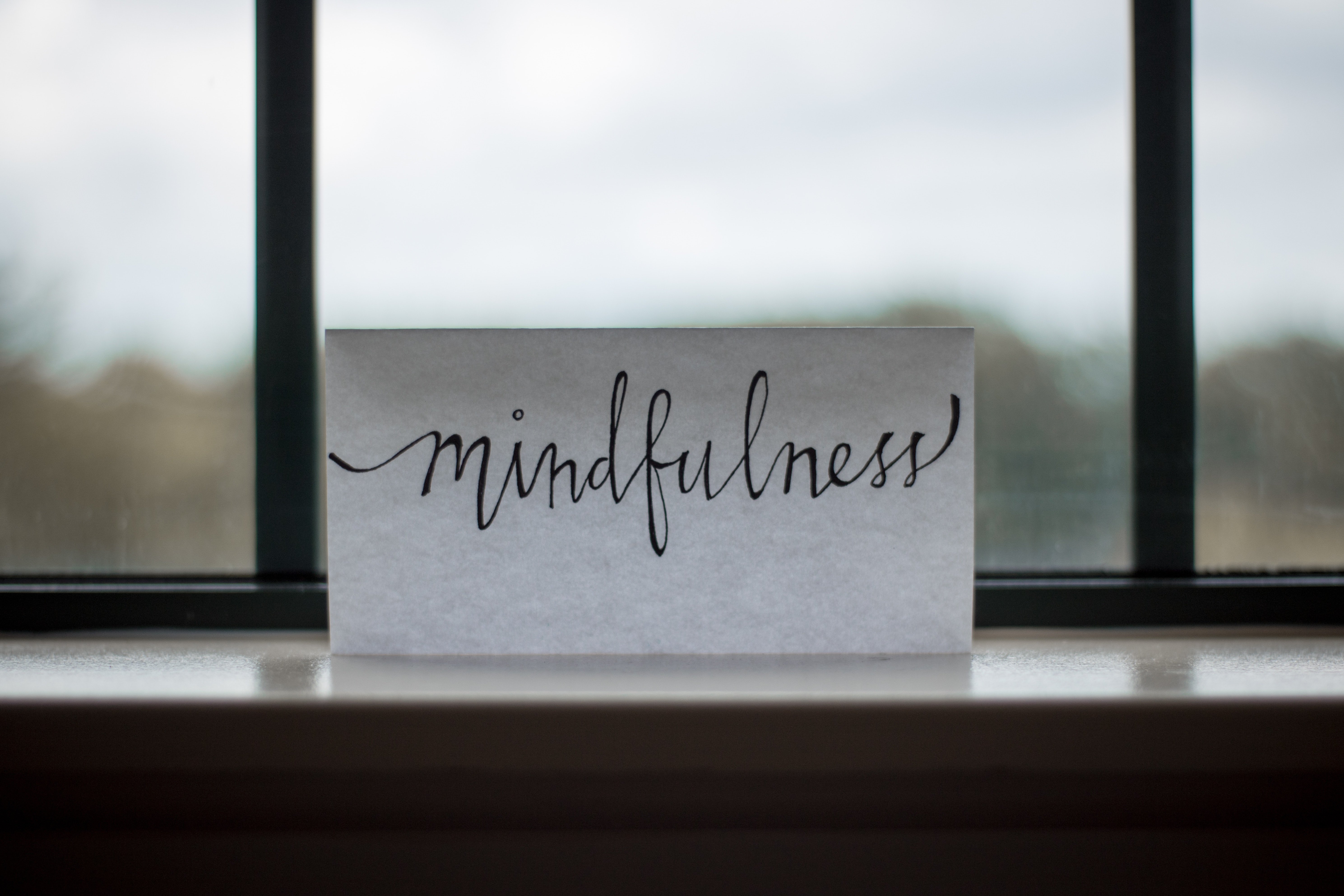Guest Blogger and associate Hadley Tarantino shares 5 ways to teach mindfulness to kids
Mindfulness is the practice of paying attention to the present moment, on purpose, and nonjudgmentally. This popular practice has gotten its fair share of attention over the course of the last two decades. But, is it more than a buzzword? Thankfully, yes! Mindfulness has been proven to reduce stress, improve relationships, and increase focus and cognitive flexibility.
One elementary school in Baltimore decided to replace detention with mindfulness, and the results are amazing. When a child breaks a rule, they are invited to go to the Mindful Moment Room to calm down and center themselves. The students are taught different breathing exercises and reflective practices to relieve their tension and think mindfully about what happened. The elementary school found that the students’ attendance rates increased and suspension rates decreased because of the implementation of mindfulness practices in lieu of strict punishment.
As evidenced by elementary schools around the country, mindfulness is an extremely powerful and profound practice for young people. Mindfulness can be a great resource to regulate emotions and find joy in everyday moments, especially for children and teenagers who become easily overwhelmed, stressed out, or emotionally dysregulated.
Mindfulness can be implemented in simple ways in the home or in schools. Many people think mindfulness is simply feeling relaxed and meditating. Although mindfulness can certainly be very relaxing, it is not its sole purpose. Mindfulness can be practiced in everyday moments. It is the practice of paying attention to the present moment with intention and nonjudgmentally.
How do I implement mindfulness in my home or with my children?
1. Explain what mindfulness is.
Start by explaining that mindfulness is a practice that teaches us to pay attention to the present moment. Life whizzes by, and often times we are not present and engaged in everyday moments. I like to ask people to recall a special time in their life that they would like to repeat or return to. Ask your child to use all 5 senses to remember this important moment: the sights, the smells, and how they felt. Then, inquire if they were aware of the power of that moment at that time. Often times we are not aware of how much power each moment holds because we are busy thinking about the past or worrying about the future. You can then bring their awareness to the possibility that that special moment may be happening right now. This quick exercise can help young people become aware of paying attention to the present moment.
2. Practice being nonjudgmental.
One of the core tenets of mindfulness is the practice of being nonjudgmental toward yourself and others. Language is a very powerful tool we use to communicate with others; but, it is also a way to communicate to ourselves. The way in which we talk to ourselves is very important. Children and teens often pick up on the language of their parents or caregivers. If we remain nonjudgmental with ourselves and talk to ourselves in a compassionate, loving way, our children will learn how to practice being nonjudgmental. For example, if you make a wrong turn while driving or burn a dish on the stove, instead of denigrating yourself by saying “That was so stupid of me” or cursing at yourself, try simply observing and describing the facts of your actions. “I took a wrong turn” or “I accidentally burnt our dinner” are better alternatives because they state the facts of what happened and do not involve self-inferences. By practicing being nonjudgmental with ourselves, our children can hopefully pick up on this skill and become more kind toward themselves. This may sound like “I got a C on my math exam. I need to change my study habits” instead of “I can’t believe I got a C on my math exam. This must mean I’m not smart.”
3. Slow down.
Multitasking has been proven to be less efficient than “one-tasking”, or completing one task at a time. When our days become busy, especially as the school year begins, we may feel the pressure to do 5 things at once to complete them faster. Unfortunately, this doesn’t work. Mindfulness is about being one-mindful. Slow down, and complete one task at a time. For example, when cooking dinner, only cook dinner. When talking with your child about their school day, don’t text and watch TV at the same time. This undivided attention we give to each task at hand will help us to do each task mindfully and remain in the present moment.
4. Experience “flow” and throw yourself into the present moment.
Mihaly Csikszentmihalyi, a renowned psychologist, studied and recognized a highly focused mental state called “flow.” Flow is experienced when one is completely absorbed in the task at hand. Many people may refer to this experience as being “in the zone.” Time seems to pass, self-consciousness melts away, and you are totally and completely interested in what you are doing. Many athletes experience flow while competing. Practice throwing yourself into the present moment while hosting a family game night, outdoor sports event, or a sing and dance marathon. This skill can be monumental as young people return to school; self-consciousness and a sense of exclusion are incompatible with flow.
5. Observe and describe thoughts and emotions.
Mindfulness is the ability to observe and describe thoughts and emotions. Acceptance and the practice of letting go are strengthened when we learn to have a transformative relationship with our thoughts and feelings. Similar to the practice of being nonjudgmental, observing and describing our thoughts and emotions calls for factual observations. For example, if you notice your child struggling with homework and he or she says, “This Social Studies homework is way too difficult”, first, validate your child’s experience, and then, ask them to reframe the sentence to “I’m having the thought that this Social Studies homework is too difficult.” This minor adjustment seems very simple, and it is. The second statement is what we would call “defusion.” It provides distance between the thought and the child. It makes it easier for the thought to come and go, instead of fusing and clinging to it. This slight adjustment can reduce feelings of anxiety and stress.
Mindfulness is not only about breathing exercises and meditation; mindfulness is a constant practice of being present in everyday life and finding small moments of joy. Try using these five skills with your children or family as they begin the school year. Mindfulness strengthens two essential skills for students: self-awareness and concentration.


